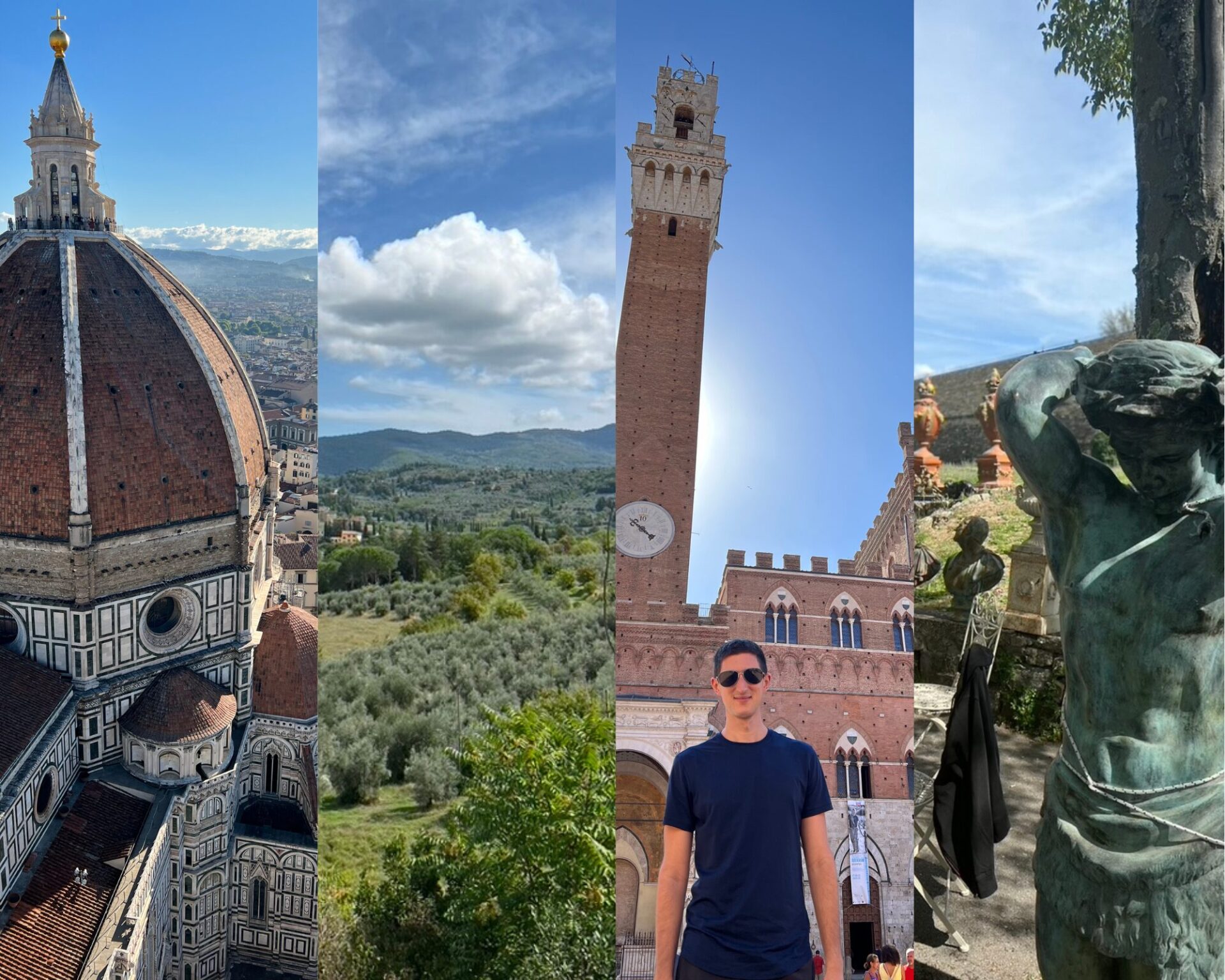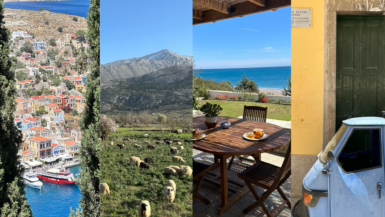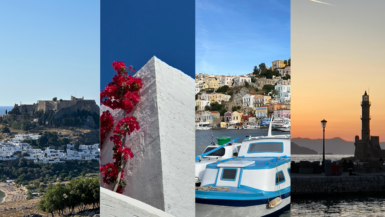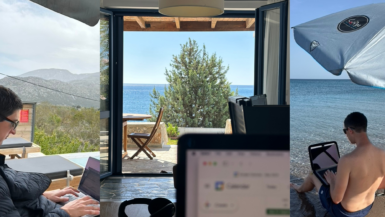Embark on a journey to the heart of Italy with my comprehensive travel guide to Tuscany. Known for its picturesque landscapes, rich history, and delectable cuisine, Tuscany offers a mosaic of experiences waiting to be discovered. From rolling vineyards and historic cities to artistic treasures and culinary delights, I’ll guide you through the best places to visit, things to do, and unique experiences to embrace. Whether you’re navigating the charming countryside or exploring its Renaissance cities, this guide will ensure you capture the essence of Tuscany at its finest. Get ready to explore Tuscany, where every corner holds a story.
Find a great hotel in Tuscany on Expedia!
Table of Contents
Complete Travel Guide to Tuscany, Italy
Why Visit Tuscany?
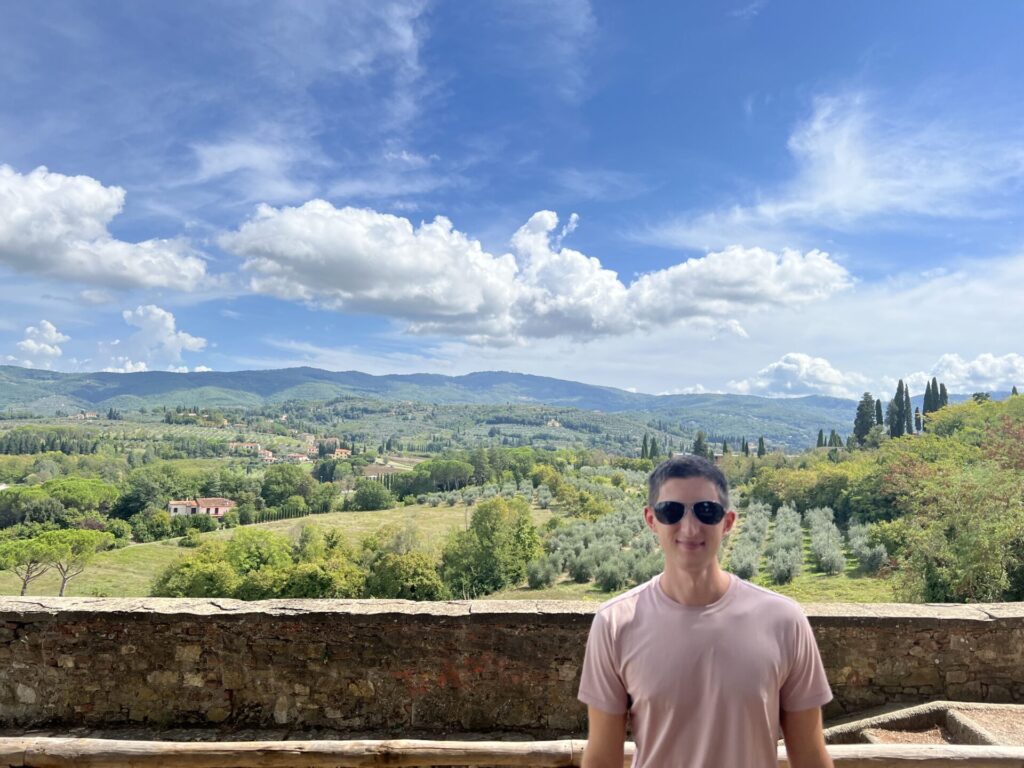
Tuscany stands as one of Italy’s most enchanting regions, celebrated for its breathtaking landscapes that stretch across rolling hills and endless vineyards. This slice of heaven is steeped in incredible history, dotted with medieval towns that seem to whisper tales of the past.
Renowned for its artistic heritage and influential culture, Tuscany has been a muse for poets, artists, and travelers alike. It’s a place where the past and present merge seamlessly, offering experiences that resonate deeply with those who wander its cobbled streets and verdant fields.
A trip to Italy would be incomplete without visiting Tuscany, a region that embodies the heart and soul of the Italian experience. Here, every moment is a masterpiece, every view a canvas, making it an essential stop for anyone seeking the quintessence of Italian beauty and heritage.
Best Places to Visit in Tuscany, Italy
1. Florence(Firenze)
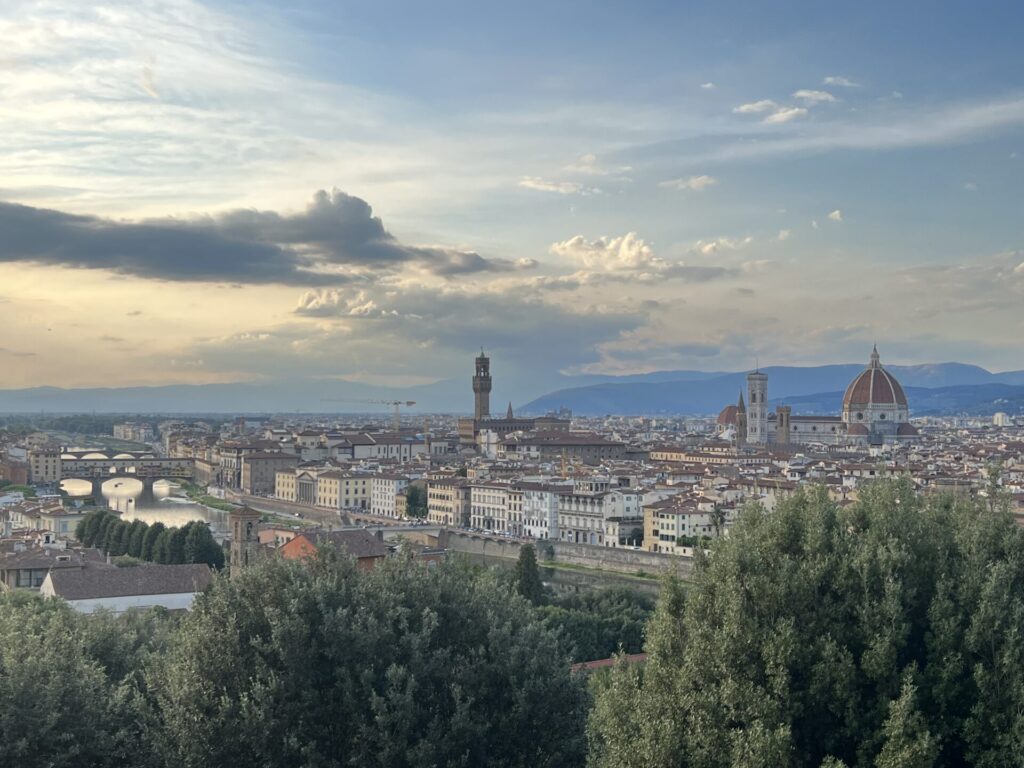
Florence, the cradle of the Renaissance, is more than a city; it’s an immersive art and history experience. Walking its streets feels like traversing a living museum, with the majestic Duomo, the iconic Uffizi Gallery, and Michelangelo’s David commanding awe at every turn. Yet, Florence isn’t stuck in the past; it pulsates with a vibrant contemporary life, from bustling markets to innovative cuisine, seamlessly blending the ancient with the modern.
- Top Things to See & Do in Florence:
- Uffizi Gallery: Home to Renaissance masterpieces.
- Florence Cathedral (Duomo): Featuring Brunelleschi’s dome.
- Ponte Vecchio: The picturesque medieval stone bridge.
- Galleria dell’Accademia: The home of Michelangelo’s David.
- Boboli Gardens: Offers beautiful views and Renaissance landscapes.
- Where to Stay in Florence:
- Budget: Plus Florence – A vibrant hostel with excellent amenities.
- Mid-Range: Hotel Pendini – Overlooks Piazza della Repubblica.
- Luxury: Palazzo Vecchietti – Offers a historic and luxurious stay.
- How to Get to & Around Florence:
- By Air: Fly into Florence’s Amerigo Vespucci Airport or Pisa’s Galileo Galilei Airport.
- By Train: Florence is well-connected to major Italian cities by train.
- By Car: While exploring by car, be mindful of the ZTL zones, which restrict traffic in the city center.
- Around Florence: The city is best explored on foot, complemented by buses and a small tram network for longer distances.
- Tips for Visiting Florence:
- Book museum tickets in advance to skip the lines.
- Explore the Oltrarno district for a taste of local life.
For a more in-depth look into Florence, check out my complete travel guide!
2. Siena
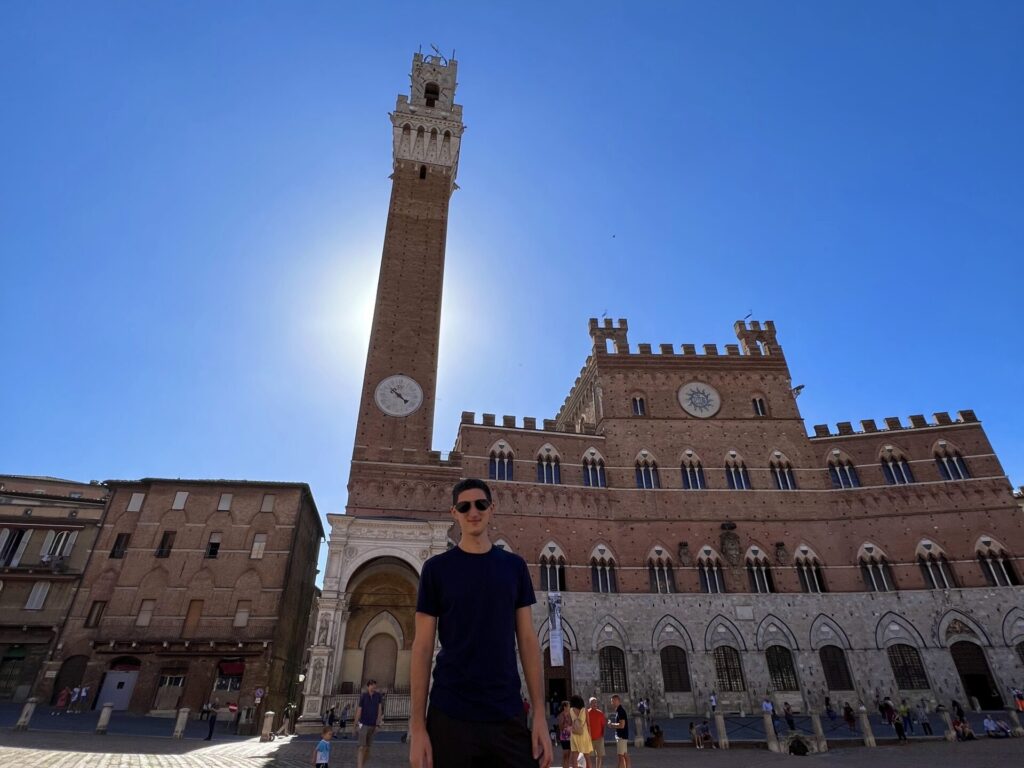
Siena, a quintessential medieval town nestled in the heart of Tuscany, offers a deep dive into the Middle Ages with its well-preserved architecture and historic ambiance. Famous for the Palio, a thrilling horse race that transforms the main square, Piazza del Campo, into a vibrant spectacle, Siena captivates visitors with its rich traditions and cultural vibrancy. The town’s stunning Gothic architecture, exemplified by the Siena Cathedral, and its winding streets offer endless exploration opportunities. Siena is not just a step back in time; it’s a celebration of Tuscan heritage and a testament to the enduring spirit of its people.
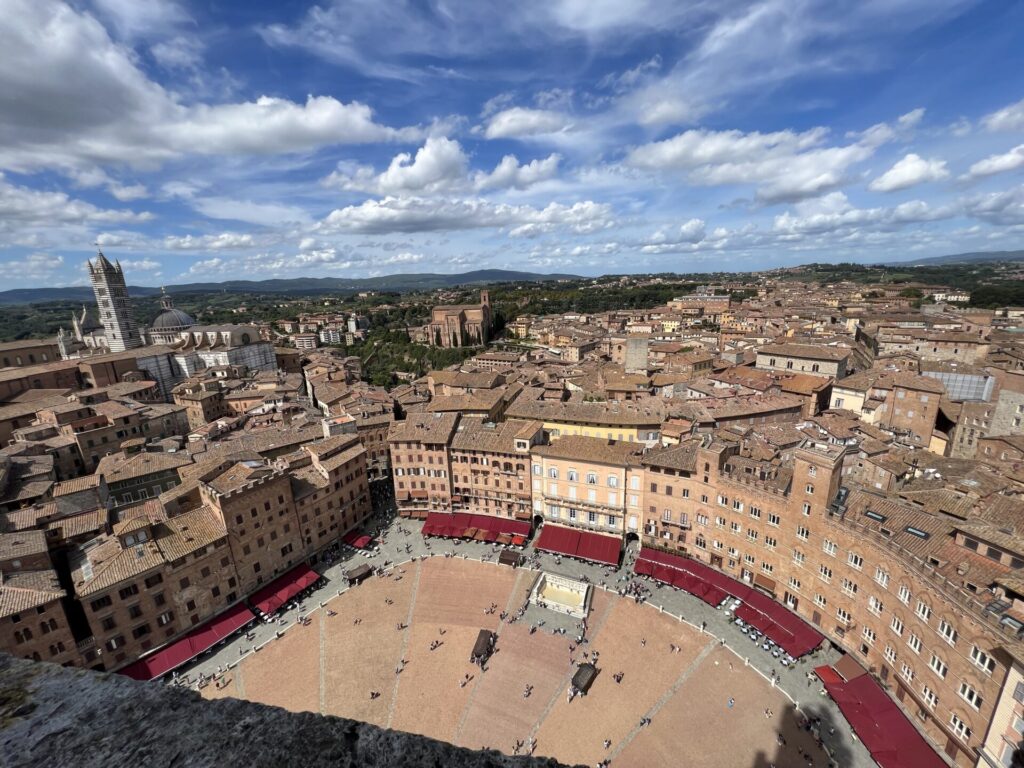
- Top Things to See & Do in Siena:
- Piazza del Campo: The heart of Siena and location of the Palio.
- Siena Cathedral: A masterpiece of Gothic architecture.
- Torre del Mangia: Offers panoramic views of the city.
- Palazzo Pubblico: The historic town hall, housing beautiful frescoes.
- Basilica of San Domenico: Home to relics of St. Catherine of Siena.
- Where to Stay in Siena:
- Budget: Casa di Osio – A cozy bed and breakfast in the historic center.
- Mid-Range: Hotel Athena – Offers stunning views of the Tuscan countryside.
- Luxury: Grand Hotel Continental Siena – A lavish experience in a 17th-century palazzo.
- How to Get to & Around Siena:
- By Car: Siena is accessible by car, but parking outside the city walls is advisable due to restricted traffic zones.
- By Bus/Train: Siena is well connected by bus and train services from major cities like Florence and Rome.
- Around Siena: The compact city center is best explored on foot to fully appreciate its historic charm.
- Tips for Visiting Siena:
- Visit during the Palio (July 2nd and August 16th) for a unique experience, but book accommodations early.
- Take a guided tour to uncover Siena’s rich history and hidden gems.
3. Arezzo
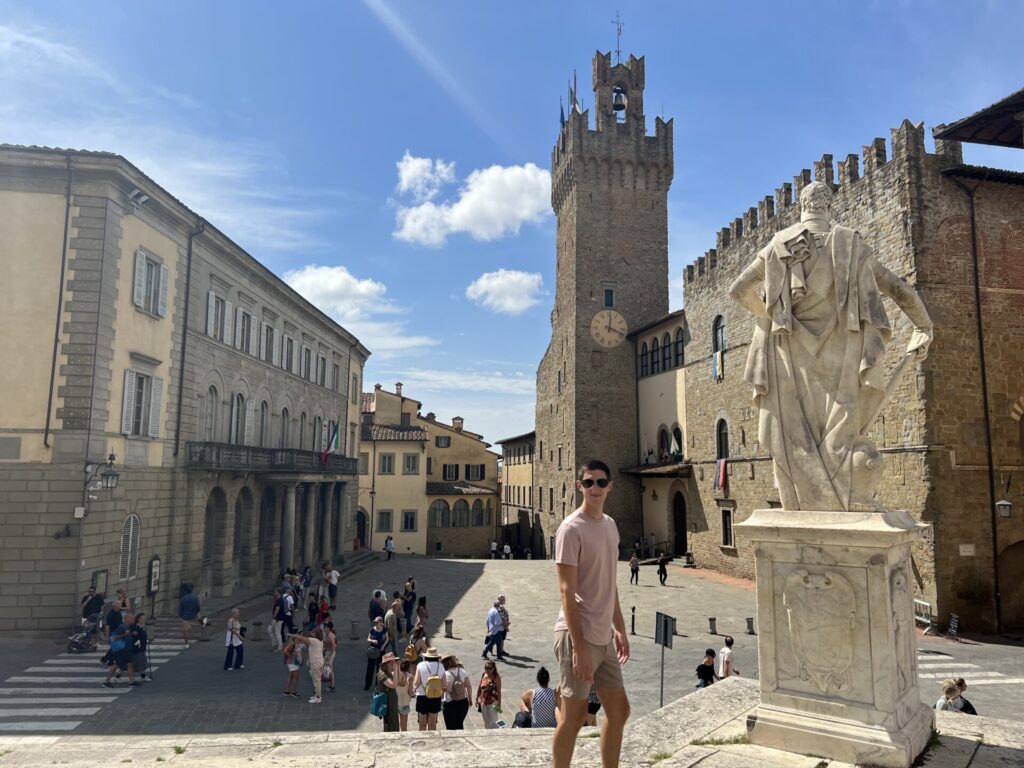
Arezzo, a charming city in eastern Tuscany, offers a blend of captivating history, art, and architecture, making it a treasure trove for those seeking the road less traveled. Unlike its more famous Tuscan counterparts, Arezzo provides a quieter, more authentic glimpse into Italian life. Arezzo’s antique market, one of the largest in Italy, transforms the city into a bustling hub for treasure hunters each month. With its medieval streets, Renaissance art, and inviting atmosphere, Arezzo invites visitors to immerse themselves in the essence of Tuscany.
- Top Things to See & Do in Arezzo:
- Piazza Grande: The medieval heart of the city, surrounded by historic buildings.
- Basilica di San Francesco: Famous for Piero della Francesca’s frescoes.
- Arezzo Cathedral: Home to beautiful stained glass and artwork.
- Antique Market: Held monthly, a paradise for collectors and enthusiasts.
- Medici Fortress: Offers panoramic views of Arezzo and the Tuscan countryside.
- Where to Stay in Arezzo:
- Budget: Hotel Cecco – Centrally located, offering simple, comfortable rooms.
- Mid-Range: Hotel L’Aretino – In the heart of Arezzo, close to the main sights.
- Luxury: Hotel Il Palazzo – A boutique hotel blending luxury with history.
- How to Get to & Around Arezzo:
- By Car: Arezzo is easily accessible by car, and parking is available outside the historical center.
- By Train: Regular train services connect Arezzo with Florence, Rome, and other major cities.
- Around Arezzo: The city’s compact size makes it perfect for exploring on foot, allowing visitors to easily navigate its historical streets and squares.
- Tips for Visiting Arezzo:
- Plan your visit around the first weekend of the month to experience the antique market.
- Enjoy the local cuisine in one of Arezzo’s many trattorias for an authentic taste of Tuscany.
4. Pisa
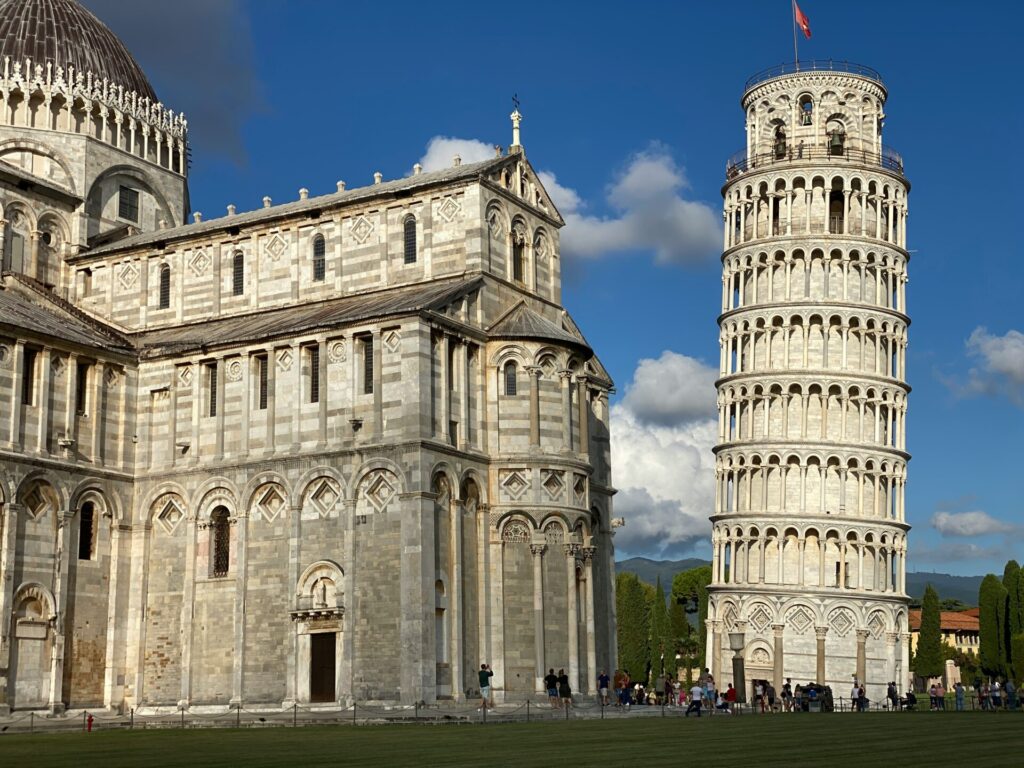
Pisa, more than just the city of the iconic Leaning Tower, offers a rich tapestry of art, history, and vibrant street life. While the Leaning Tower steals most of the headlines, the surrounding cathedral, baptistery, and cemeteries are equally compelling and speak volumes of Pisa’s historical significance. Beyond its leaning wonder, Pisa’s riverside setting, bustling cafes, and lively student population make it a dynamic city to explore, offering a blend of laid-back Tuscan life and spirited Italian culture.
- Top Things to See & Do in Pisa:
- Leaning Tower of Pisa: The world-renowned tower that defies gravity.
- Pisa Cathedral: A masterpiece of Romanesque architecture.
- Baptistery: Known for its remarkable acoustics and beautiful facade.
- Camposanto: A historic cemetery with fascinating frescoes and sculptures.
- Where to Stay in Pisa:
- Budget: Helvetia Pisa Tower – Just steps from the Leaning Tower.
- Mid-Range: Hotel Bologna – A comfortable stay in the city center.
- Luxury: Relais dell’Orologio – A boutique hotel offering luxury near the main attractions.
- How to Get to & Around Pisa:
- By Air: Pisa International Airport offers direct flights to various European cities.
- By Train: Pisa is well-connected by train, making it easily accessible from Florence and other major Italian cities.
- By Car: Accessible by car, though parking near the city center can be limited.
- Around Pisa: The city is compact and walkable, with most attractions located within easy walking distance of each other.
- Tips for Visiting Pisa:
- Visit early in the morning or late in the afternoon to avoid crowds at the Leaning Tower.
- Consider purchasing a combination ticket that includes entrance to several monuments in Piazza dei Miracoli.
- Don’t miss exploring beyond the tower; the city’s vibrant cafes and markets offer a genuine taste of local life.
Additional Towns to Consider Visiting
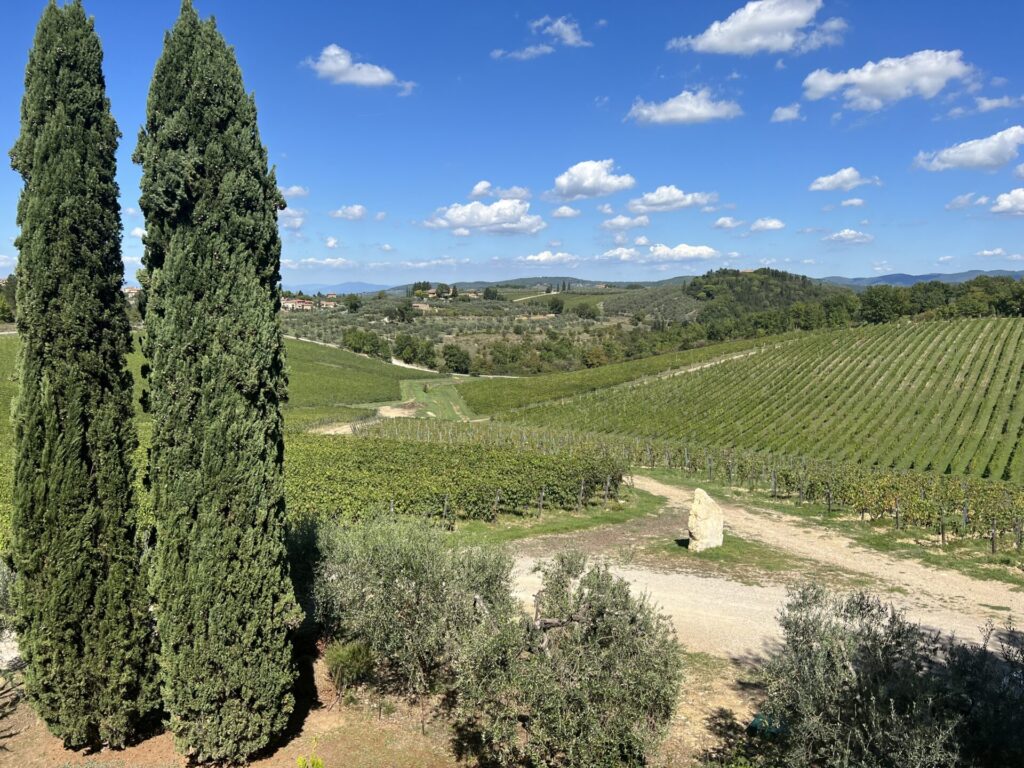
- Lucca: Encircled by Renaissance-era walls that have been converted into walking and biking paths, Lucca is known for its well-preserved historical architecture, lovely squares, and for hosting exciting events like Lucca Comics & Games.
- San Gimignano: Often referred to as the “Town of Fine Towers,” San Gimignano stands out with its skyline of medieval towers. It offers a glimpse into medieval life and breathtaking views of the surrounding countryside.
- Volterra: Rich in Etruscan heritage, Volterra captivates with its ancient ruins, Roman theatre, and alabaster craftsmanship. Its medieval architecture and panoramic views make it a hidden gem.
- Montepulciano: Renowned for its Noble wine, Montepulciano is a hill town characterized by grand palaces, charming streets, and a wealth of wine-tasting opportunities.
- Cortona: Immortalized in the book and film “Under the Tuscan Sun,” Cortona offers stunning views over Lake Trasimeno and Val di Chiana, alongside enchanting streets filled with art and history.
Best Things to Do/Best Experiences to Have in Tuscany, Italy
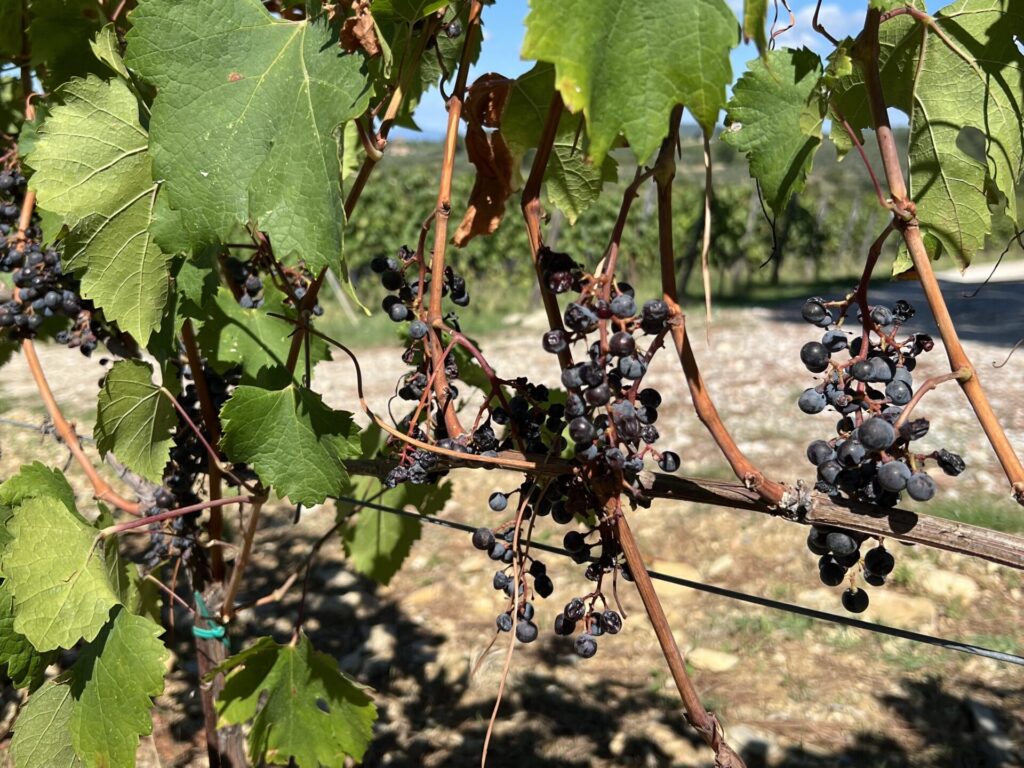
Tuscany is a region that delights the senses and nurtures the soul. With its stunning landscapes, rich history, and unparalleled culinary tradition, there’s a wealth of experiences waiting to be discovered. Here’s a list of some of the best things to do and experiences to have in Tuscany, Italy:
- Wine Tastings in Chianti: Explore the rolling hills of Chianti, home to some of the world’s finest wines. Visit local wineries for tastings and learn about the winemaking process from grape to glass.
- Vineyard Tours: Wander through vineyards that stretch as far as the eye can see. Many estates offer guided tours that provide insights into the cultivation of grapes and the natural beauty of the Tuscan countryside.
- Olive Grove Tours and Tastings: Discover the art of olive oil production with a visit to a traditional olive grove. Learn about the harvesting process and enjoy a tasting of some of the freshest, most flavorful olive oils.
- Truffle Hunting: Join a local truffle hunter and their trained dogs for an unforgettable adventure in search of the coveted Tuscan truffles.
- Cooking Classes: Immerse yourself in Tuscan cuisine with a cooking class. Learn how to prepare classic dishes using local ingredients, and then enjoy the fruits of your labor with a communal meal.
- Cycling Tours: Experience the beauty of Tuscany at a slower pace with a cycling tour through its scenic landscapes.
- Historical Estate Tours: Visit some of Tuscany’s historic estates and villas, many of which have been preserved for centuries. Learn about the history and legacy of these magnificent properties.
Each of these experiences offers a unique way to connect with the essence of Tuscany, creating memories that will last a lifetime.
How to Get Around/Transport Options
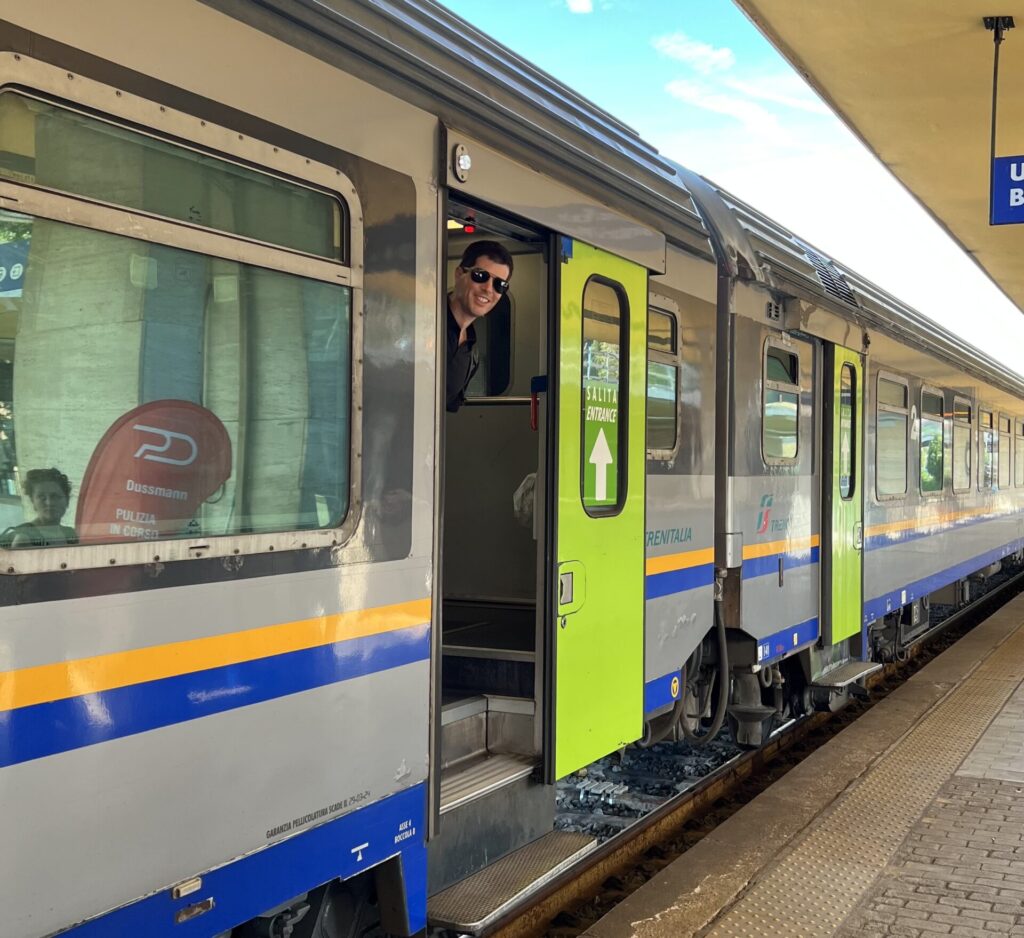
Navigating Tuscany offers a glimpse into Italy’s efficient and user-friendly transportation system. The train network stands out for its reliability, connecting major towns and cities with ease. If your itinerary revolves around the likes of Florence, Siena, Pisa, or Arezzo, trains provide a hassle-free way to hop between these destinations, offering a scenic journey through the Tuscan landscape.
However, for those drawn to the allure of rolling vineyards, secluded olive groves, and the desire to discover Tuscany’s hidden gems, renting a car transforms the journey into an adventure.
A car gives you the freedom to explore at your own pace, venture off the traditional tourist paths, and soak in the region’s unparalleled beauty. It’s the key to unlocking the full Tuscan experience, from sunrise views over ancient vineyards to sunset drives through historic hilltop towns. Renting a car is not just a recommendation; it’s essential for those looking to fully embrace the essence of Tuscany and create unforgettable memories.
Best Time of Year to Visit Tuscany
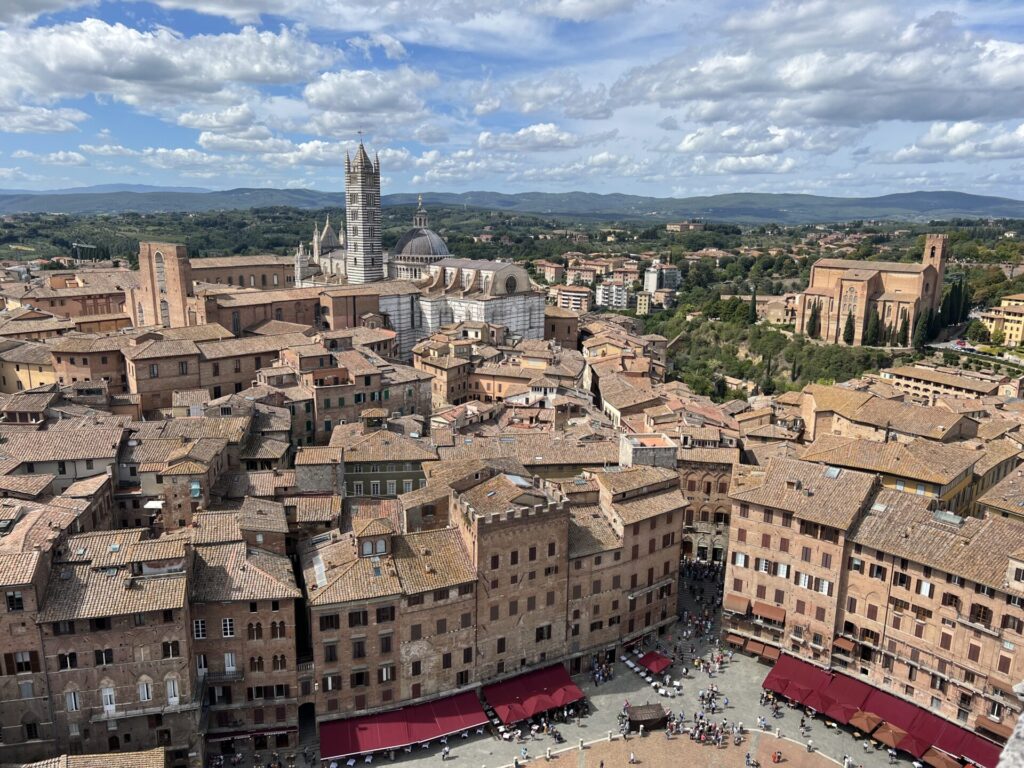
Spring (March to May): Ideal for witnessing Tuscany’s countryside bloom. Moderate crowd levels and pleasant weather make it perfect for outdoor activities, though occasional rain showers occur.
Summer (June to August): Peak tourist season brings bustling streets and high accommodation prices, but offers vibrant festivals and warm, sunny days ideal for beach trips and late-night dining.
Autumn (September to November): Harvest season brings the grape and olive harvests, making it a fantastic time for food and wine enthusiasts. Cooler temperatures and thinning crowds create a more relaxed atmosphere, with accommodation prices starting to decrease.
Winter (December to February): The quietest season, offering the lowest accommodation costs. Cold weather limits some outdoor activities, but the region’s beauty shines with festive decorations and events, especially in the lead-up to Christmas.
Tips for Visiting Tuscany, Italy
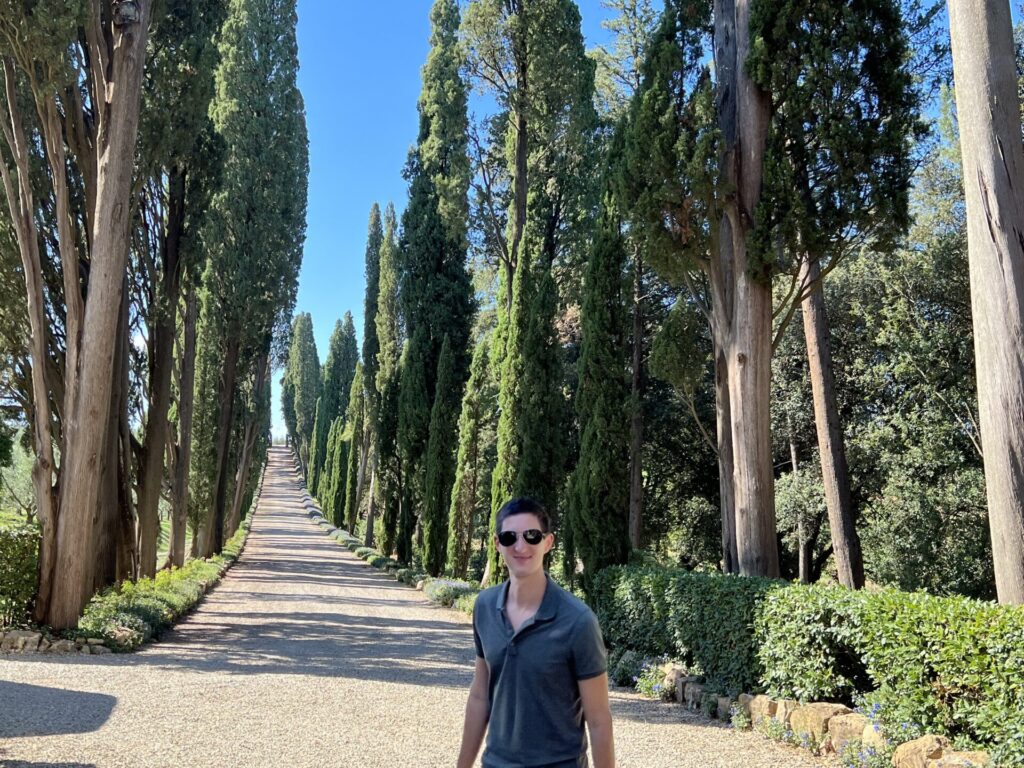
- Get Connected with Airalo e-SIMS: Ensure seamless connectivity by purchasing an Airalo e-SIM before your trip. This allows you to access local data plans affordably, keeping you connected without the high roaming costs.
- Use Expedia for the Best Hotel Deals: For accommodation, Expedia often offers competitive rates and comprehensive options across Tuscany, from rustic farmhouses to luxury hotels.
- Relax and Enjoy the Slow ‘Dolce Vita’ Pace of Life: Embrace the leisurely pace of Tuscany. Allow yourself to linger over meals, enjoy long walks, and soak in the beauty of the landscape. The true essence of Tuscany is found in its unhurried lifestyle.
- Consider Group Tours for Ease of Use and Time Constraints: Group tours can be an efficient way to see the highlights of Tuscany, especially if you’re tight on time. They offer a hassle-free way to visit top sites and learn about the region’s history and culture.
- Pack Comfortable Walking Shoes: Many of Tuscany’s towns have historic centers best explored on foot, often with cobblestone streets. Comfortable shoes are a must for enjoying these walks without discomfort.
- Learn Basic Italian Phrases: While many locals speak English, learning a few Italian phrases can enhance your interactions and show respect for the local culture.
- Respect Local Customs and Sustainability Practices: Be mindful of Tuscany’s efforts to preserve its natural and cultural heritage. Follow local guidelines for sustainability and etiquette, especially in rural and preserved areas.
Conclusion

Exploring Tuscany is an invitation to immerse yourself in a region where history, culture, and natural beauty converge into an unforgettable experience. From the rolling hills dotted with vineyards to the historic cities brimming with art, Tuscany encapsulates the very essence of the Italian ‘dolce vita.’ Whether you’re savoring a glass of Chianti, wandering through ancient streets, or simply soaking in the picturesque landscapes, Tuscany promises a journey that will captivate your heart and soul. Let this guide be your compass to the best of Tuscany, where every visit is a step into a living masterpiece.
Pin this Post for Later!


